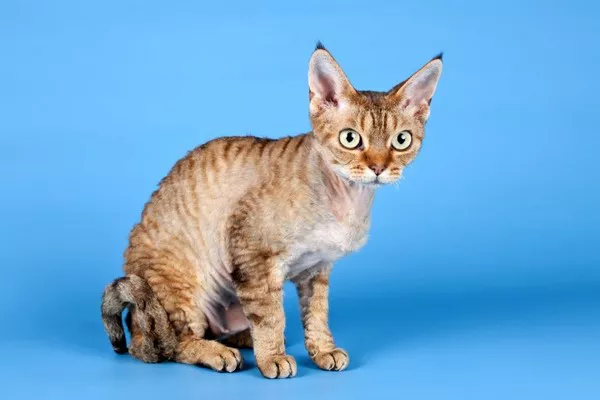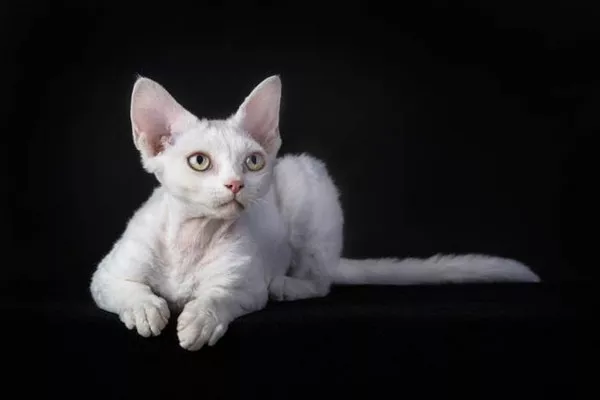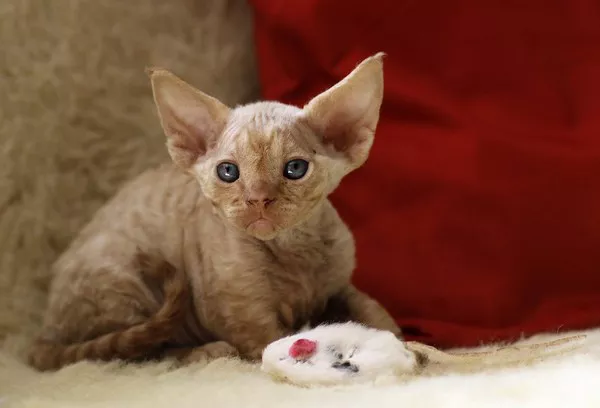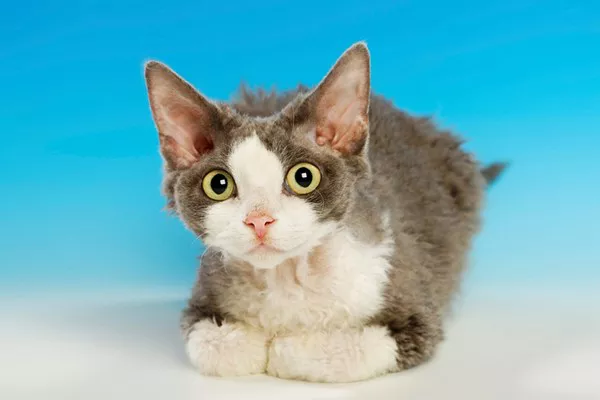Devon Rex cats, renowned for their striking appearance and endearing personalities, are a unique breed characterized by their soft, wavy coats and wide-set, elfin features. A significant aspect of their allure lies in the variety of colors and patterns their coats can exhibit. This article provides a comprehensive look at how Devon Rex cats develop their distinctive coat colors, exploring the genetic mechanisms, the influence of breeding practices, and the role of genetic mutation.
Devon Rex Cats
The Devon Rex breed originated in Devonshire, England, in the late 1950s, with a curly-coated male kitten named Kirlee, who is considered the progenitor of the breed. Unlike any other cat at the time, Kirlee’s curls were the result of a spontaneous genetic mutation. This breed is now cherished worldwide, not only for its playful and loyal nature but also for its diverse range of coat colors and patterns.
Understanding Basic Cat Genetics
Before delving into the specifics of Devon Rex coloration, it’s essential to understand some fundamental concepts of feline genetics. Cat coat colors and patterns are determined by multiple genes that control the distribution and type of pigments in the fur. The primary pigments are eumelanin (black or brown) and pheomelanin (red or cream), with the intensity and distribution influenced by various genetic factors.
Key Genetic Concepts
Alleles: Variants of a gene that result in different traits, such as coat color.
Dominant and Recessive Genes: Dominant genes express their traits even if only one copy is present (heterozygous), while recessive genes require two copies (homozygous) to express the trait.
Polygenic Traits: Traits influenced by more than one gene, such as fur color intensity.
The Genetics of Coat Color in Devon Rex Cats
Devon Rex cats share the same genetic basis for coat color as other breeds, but it is the specific combination and interaction of these genes that create the spectrum of colors seen in this breed.
Basic Color Genes
Black (B) and Red (O) Loci: The B locus (Black) gene determines whether the cat’s coat is primarily black (B) or brown (b). The O locus (Orange) gene can override the black pigment, turning the fur red. Notably, the O gene is sex-linked, which means that it is carried on the X chromosome.
Dilution Gene (D) Locus: This gene dilutes the dense pigments of black or red to softer shades like blue (diluted black) or cream (diluted red).
Pattern Genes
Tabby Patterns: Controlled by the Agouti gene (A), which decides the distribution of pigment in individual hairs, creating patterns such as classic, mackerel, and ticked tabby.
Point Restriction (cs): Seen in Siamese and related breeds, this gene causes pigmentation to be restricted to cooler areas of the body like the ears, paws, and tail, a pattern also found in some Devon Rex cats.
White Spotting and Piebald (S) Locus: Determines the presence and extent of white areas on the coat.
Modifying Genes and Polygenes
Apart from the primary color genes, there are numerous modifiers and polygenes that influence shade, pattern intensity, and contrast. These genes can lead to a wide range of appearances even among cats sharing the same basic color genotype.
Mutation and the Devon Rex Coat
The defining feature of the Devon Rex is its soft, wavy fur, attributed to a mutation in the gene responsible for hair development and texture. This mutation not only affects the physical texture but can also influence how color pigments are displayed, making the fur appear softer in color than that of cats with straight coats.
Role of Genetics in Hair Texture
The gene mutation in Devon Rex cats affects keratin proteins in the hair, leading to the reduced and irregular hair shafts characteristic of their coat. This mutation is distinct from that of the Cornish Rex, despite the superficial similarity in coat appearance.
Breeding and Color Selection
Selective breeding can emphasize or diminish certain colors and patterns within the breed. Breeders often aim for specific outcomes by pairing cats with desired traits, though the genetic diversity within the breed can lead to unexpected results, adding to the genetic tapestry of the offspring.
Breeding Strategies
Line Breeding: Increases the likelihood of certain colors or patterns by breeding cats with similar genetic backgrounds.
Outcrossing: Introduces genetic diversity by breeding with cats of different backgrounds, which can also introduce new colors or patterns.
Preservation of Genetic Health
While breeding for color and appearance is a significant aspect of cat breeding, it is essential to maintain genetic health by avoiding inbreeding depression (reduced biological fitness due to too closely related genetics). Ethical breeding practices ensure the health, vitality, and genetic diversity of the breed.
Conclusion
The coat color of Devon Rex cats is a product of a complex interplay of genetics. Each cat’s unique genetic makeup determines its particular palette and pattern. Understanding these genetic fundamentals not only fascinates breed enthusiasts and geneticists but also aids breeders in making informed decisions. As genetic testing and technology advance, our understanding of these mechanisms continues to evolve, enhancing our appreciation of this enchanting breed. Devon Rex cats continue to captivate cat lovers around the world with their playful personalities and striking, diverse coats that are as unique as their endearing quirks.

























